- Case Studies
- Posted
Limerick Civil Trust

The effect that Dennis Leonard and the Limerick Civic Trust have had on the cities landscape is probably immeasurable. Since 1983 they’ve overseen a great many projects from the creation of Merchants Quay Park to the recent superb restoration of the Georgian House and Garden Project at No.2 Pery Square. Construct Ireland tracked down the busy director to talk about the sterling work already done, current projects and to ponder the implications of recent FAS cutbacks.
Can you tell me a little about the general role of the civic trust in limerick?
We’re into the restoration and preservation of Limerick’s architectural environment and heritage. When we started there were serious problems and neglect. Twenty years later we’re finding that the attitude has changed. There’s a greater awareness of our heritage and greater efforts are being made. It's still a long haul though. Our role is to lead by example, to show what can be done.
How many projects are normally ongoing at any one time?
We usually have one major one, and then 4 or 5 supporting projects. It's a policy that has worked well for us. Our big one at the moment is the restoration of St Johns CoI Church and its wall. It's a joint project with Limerick City Council. They put a new roof on the building, a traditional slate one, and we're doing all the stonework and the interior.
Is it easy to work back to the original specifications and designs?
We've been reasonably lucky in so far as there have been surviving pieces. You'll always find one or two, no matter how bad a building is, and that'll give you a template to make a cast from. If we have to splice in replacement timbers to eliminate rotted ends and reinstate good timbers we would do it in the exact same kind of wood. The detail would be followed through precisely.
It seems that your most notable project in recent years is The Georgian House and Garden at No.2 Pery Square, and by far the largest undertaken by the Trust. It’s become quite the community success, becoming a welcome addition to Limerick’s tourist trails and has even developed a niche as an intimate venue for the arts. But what condition was the property in to begin with?
When we got the house first it was a rabbit warren of flats. The first thing we did was to reinstate the original room plan. We did a whole series of workshops and brought in specialist restorers for plasterwork, woodwork and marbling, and so on. We spent 3 years doing the plasterwork alone. It's not something that could be done commercially. We had to re-enforce the various floors. It was a big job, but it didn’t interfere with the plasterwork underneath, and that experience will always stand to us. We know, for arguments sake, that what we've done has been copied in other restorations in Dublin, not to mind Limerick.

Were a lot of the people involved all taken from FAS schemes?
It was all FAS. There were about 16 participants. We were training fellows in how to make replacement pieces, and I know they've gone on to repair other things around the city.
Do you think FAS are equipped to keep the old crafts alive?
I feel that the current cutbacks in community employment and job initiatives in particular are a pity. If you go around any part of Ireland to any small village or town, you'll see some FAS people working there, cleaning up, painting and replacing features. That will be eliminated and who will replace it? If you get four or five FAS people they bring in a lot of private sector resources. Like architects giving their services for free to support a project, or an engineer giving his input for free. If the FAS people aren't working, the contribution of benefits in kind and personal time will be taken away with them. The Tidy Towns is an outstanding success story, and in every entrant you'll find there’s a FAS project.
What benefits has it brought to Limerick itself?
The whole thing knocks on. If you go into a city or town that’s well maintained it'll give a good impression. Potential visitors or investors will see that the area cares for its environment. A lot of people will come to a town unannounced, and will often be walking around unchaperoned. They'll be drawing their own conclusions on a place. It's like putting on your best suit to go for an interview. Heritage and environment is the same thing.
Are there initiatives you would like to see other civic societies and local authorities take on? What example would you like them to take from Limerick Civic Trust?
It depends on the resources in each community and how people want to adapt their own Trust. I think people will follow example. After doing up the Georgian house we noticed that other houses in the immediate environs started working on their own. It has a knock on domino effect. It's very easy to say a corporation should do this or that, but if you actually go out and do it yourself you'll find the corporation will support you somehow. Each project will attract its own money.
Are you pleased with the difference you've made to the landscape of Limerick, and is there a lot left to be done?
We've completed 106 projects and we'll often say our biggest one is the restoration of Civic Pride, that’s the big one. I think we've made a huge impact in Limerick over our 20 years. We're very proud of our track record and we're planning a major project to mark our 20th year which will be announced later on in the year
Related items
-
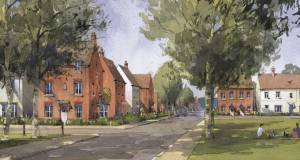 More UK councils adopt passive house standard
More UK councils adopt passive house standard -
 Historic London house gets near passive transformation
Historic London house gets near passive transformation -
 Our passive journey #4: Planning, storm water decisions & heating with tea lights
Our passive journey #4: Planning, storm water decisions & heating with tea lights -
 How to make Irish housing genuinely affordable...
How to make Irish housing genuinely affordable... -
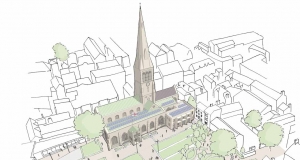 Leicester cathedral to get passive extension
Leicester cathedral to get passive extension -
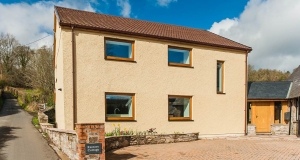 Brecon Beacons stone cottage gets Enerphit treatment
Brecon Beacons stone cottage gets Enerphit treatment -
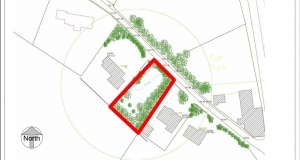 Our passive journey #3: Designing our family’s passive house
Our passive journey #3: Designing our family’s passive house -
 Planning granted for new passive house in listed parkland
Planning granted for new passive house in listed parkland -
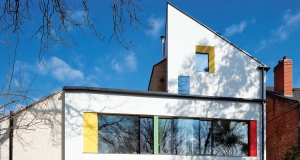 The UK's greenest ever retrofit - 6 years on
The UK's greenest ever retrofit - 6 years on -
 Victorian upgrade hits 80% energy saving
Victorian upgrade hits 80% energy saving -
RIAI host one day course on home energy upgrades
-
Schools finances waterless urinals with pay-as-you-save

